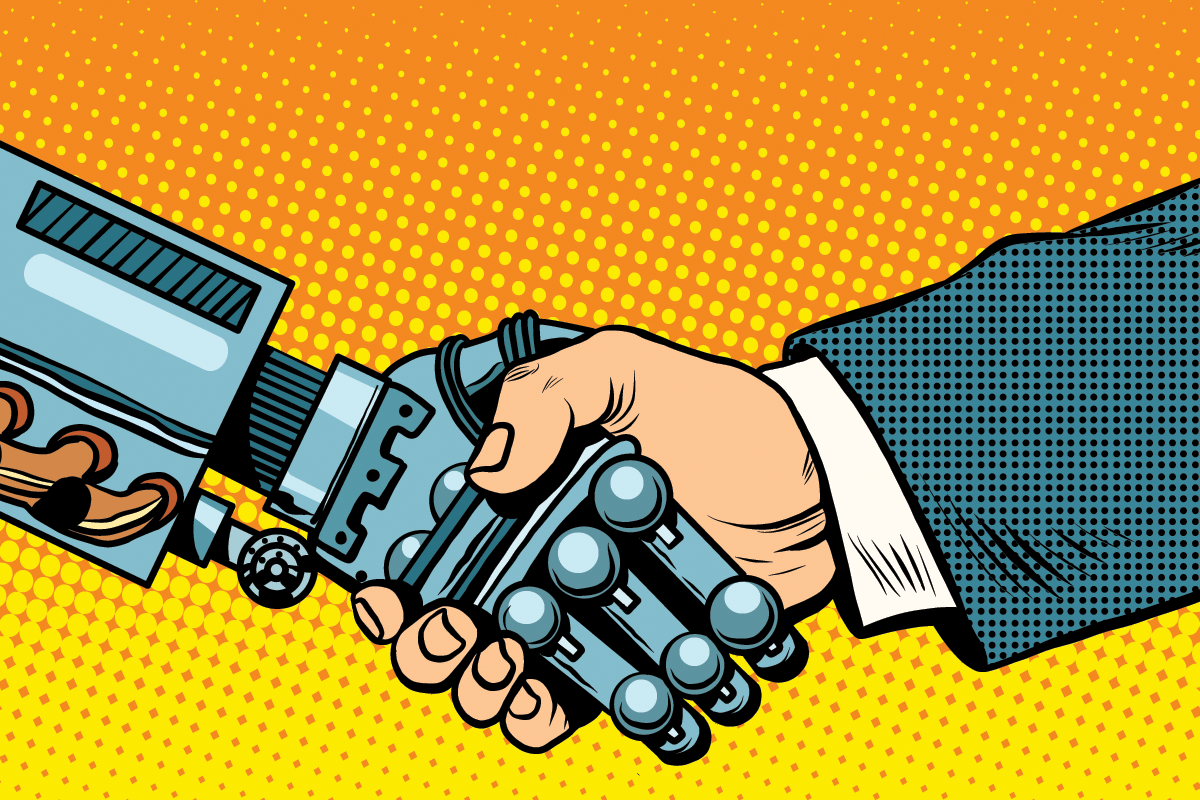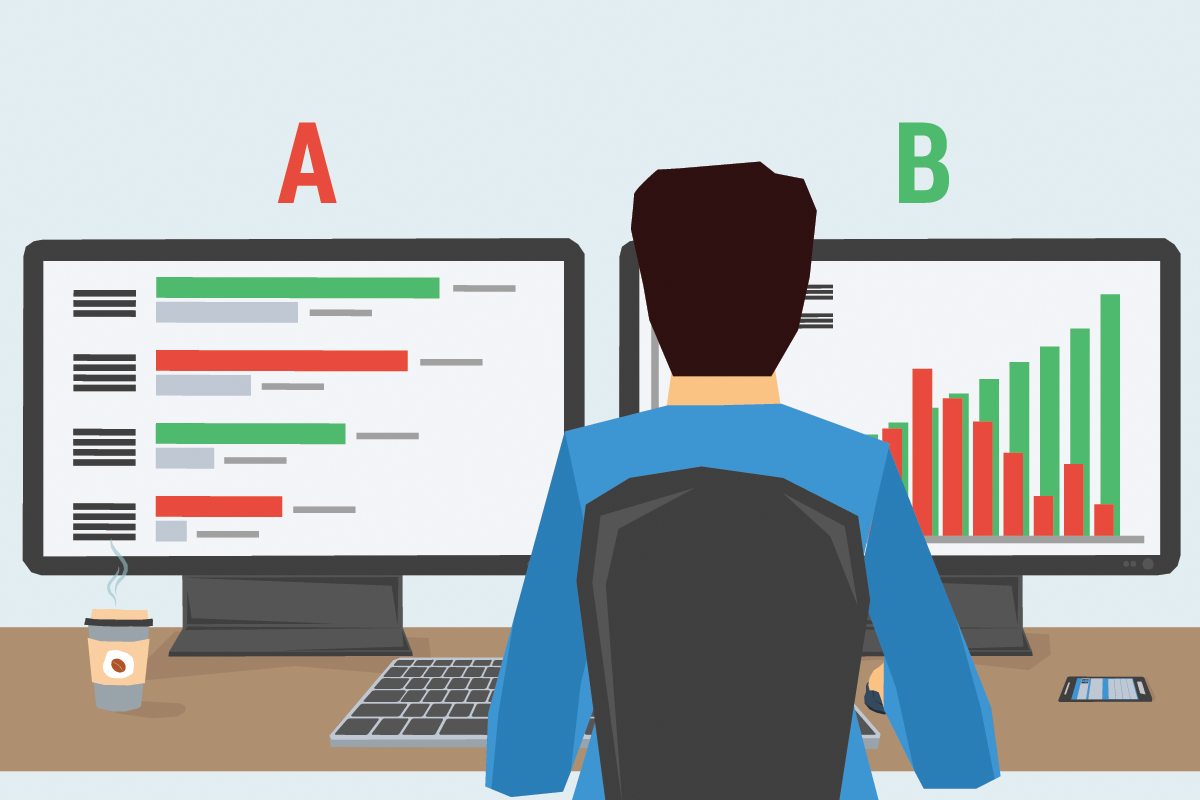Modeling Success Is Impossible

One of the cornerstones of NLP is modeling. In fact, the entirety of NLP was created through modeling. The linguistic-persuasion aspect was modeled from the top therapists at the time. NLP if often referred to as the “study of excellence.” Which means they find people doing excellent things, copy them, and then teach them to others.
This idea of modeling so ubiquitous that if you take any MBA class at any respectable college, you’ll study successful business models. Starbucks, Apple, Microsoft and other billion-dollar companies are used as a blueprint for success. That if one only takes apart what the most successful companies are doing, and simply copy them, you’ll be successful.
Modern Magic
Even courses you find online on how to be rich, or how to make money or how to do anything are taught like that.
“Look over my shoulder while I build a successful website from scratch!”
Sounds so compelling!
“Come to my seminar and I’ll show you everything about how I make my millions!”
Sounds almost too good to be true, right?
Well it is. Because there is one thing that is missing. And if you don’t do this one thing, you will only be successful if you are extremely lucky. I know, this sounds horrible!. But by the end of this post, you will know, beyond a shadow of a doubt, why modeling success, why studying excellence, is theoretically impossible. Yep, you read that right. Theoretically impossible.
MBA programs, all the business books you’ll find at Amazon at your local bookstore, any “look over my shoulder” courses you find are based on an impossibility. Let’s go over a few examples to see just why this is impossible. (Don’t worry, by the end of this post you’ll know what to do to become successful).
A – B Testing

Let’s say you had a website, and on this website was a sales page. (like this one here). And let’s say this sales converted at 2%. Meaning that for every hundred visitors you got, you got two sales. Not bad. But suppose you wanted to do better. A common thing in all advertising is the idea of a split test.
Setup
So on your website, let’s say you created a split test. You changed one small thing. Maybe you re-worded your main headline. Maybe you used a slightly different icon for the checkmarks on your bullet lest. But once you chose the one thing to change, you now have to pages. A, the original one, and B the new one.
Let’s say you ran that test for one day. (Turns out that for each split test, you have to wait until you get some statistically relevant results. But for our purposes we’ll assume 1000 visitors is enough for one split test). We’ll assume you get 1000 visitors per day to your sales page. And after the one day, you see that version A, as expected, is converting at 2%. But version B is converting at 2.2 %.
New A Version
Once you choose B as the winner, that becomes the new A. A is always the benchmark you’re comparing the new version (B) to. So let’s say you tweak something else. Only this time, the new version (version B is always the new, untested version) gets only 1.5%. Terrible! So you keep A (A is at 2.2%) and come up with another B.
Three Years Of Testing
Now, let’s imagine you’ve done this for three solid years. Each time you make a tweak ,and run an A-B test. Sometimes B is better, sometimes it’s not. When it’s not, you ditch it and try something else. When it’s better, you keep it. Let’s say that after three years, your sales page is now converting at 30%. That’s fantastic!
So fantastic that you are the highest converting website on the entire Internet. Pretty soon Harvard Business school comes knocking, and wants to study your website. They want to ask the magic question: “Why does your website convert so highly?”
No Idea, Man!
The truth is that you would have no idea! You’ve just been running split tests for three years. Half of them sucked, half of them didn’t. Could you have predicted before hand which ones would suck, and which ones didn’t? Of course not! Otherwise why run the sucky ones if you know they are going to suck! The truth is for each and every split test, you have NO IDEA who is going to be the winner.
But What About The Data?
Suppose you kept careful records of all your split tests. You ran them once a day for three years, and you’ve got plenty of data. That should help, right? All you really know is that when you held everything else constant except for one simple test (remember, each test was changing one single thing), font X in the headline did slightly better than font Y.
Could This Excellence Be Studied?
Suppose this was included in the latest NLP, “study of excellence.” What could somebody learn from the final, winning website that was converting at 30%? Sure, they might get some vague ideas, but remember, you were using this one website for a very specific market. Maybe people who buy chicken coop plans (or whatever this imaginary website was about) absolutely LOVE Helvetica font, but people who build swing sets absolutely HATE IT! How would you know this? You wouldn’t!
All Businesses Are Like This Imaginary Website

It’s not much of a stretch to consider all businesses like this imaginary website. Let’s say you have a regular mall, in a regular city. The mall has been around for ten years. Some stores that rent out space to do well, others not so well. The stores that don’t do well close up and go home. They are replaced by other shops.
Eventually, the mall will be filled by shops that do well. Every time a shop doesn’t do well, it closes up and moves out. Then another shop moves in. Every time a shop moves in and does well, it continues to do well. So eventually, you’ll have a mall filled with shops that are doing well.
Reverse Engineered Mall Success
Now, suppose you wanted to go in and study all the successful stores in the mall that were doing well, thinking that you’d be clever and think ahead. Maybe by studying the successful shops, you’d be in much better shape. (Study of excellence). But you can’t really sell the same stuff that everybody else is selling in the mall.
Remember our hypothetical argument that people who build chicken coops may like a certain font, and that same font might not work on a website that sells swing sets? It’s like that. All the successful shops in the mall are successful selling what they are selling. And perhaps one of the variables might be their location.
Consider that a travel shop that is across from a computer store might not do so well if it’s across from a fabric store. Why? Who the heck knows. But if you were split testing everything in the mall, you’d have to consider the absolute store location (where it is in the layout) and the relative shop location (what stores they are next to). Right off the bat you have a variable that you can’t measure or control.
And you’re also going to be selling something that nobody else in the mall is selling, so your data that you get from reverse engineering success is pretty limited. At data you get is going to be general.
Why Do Things Cost So Much?
If you ask anybody why a particular product costs what it does (aside from general economic factors such as inflation, recessions, etc.) the answer given is usually wrong. Most people explain costs by explaining how much goes into the production of said product. This is only half true.
What Really Determines Costs?
The “asking price” is due to the “inputs.” The cost of labor, the cost of raw materials, etc. But the real reason things cost what they do is very simple. Because people are willing to pay the asking price. If nobody is willing to pay the asking price, the product won’t exist.
Gold Plated Cars
Imagine if the only reason for costs (meaning they are sold to plenty of people and therefore exist as an item for sale on the general market) were only due to inputs. Could a car manufacture one day decide to paint all his cars with gold infused paint? He could try. But then nobody would buy them, and they wouldn’t be sitting around in any showrooms. So they soon wouldn’t exist.
Too Expensive Products And Failed Mall Stores
This is what the failed mall stores and these products whose asking price is higher than what people are willing to pay have in common. They don’t exist. The mall stores that failed have all given up and gone home. The stuff that nobody wants to buy doesn’t exist. Sure, it might in some museum or something, like the Spruce Goose, but it’s not being sold anywhere.
You might get “lucky” and see a one of a kind, goofy product that nobody is buying. You might stroll through an otherwise successful mall (which, due to horrible economic conditions, is getting harder and harder) and find a store that is going out of business while every other mall shop is thriving, but these don’t last long. They will soon be replaced by mall shops that don’t suck and products that aren’t too expensive to sell.
Tit For Tat

A long time ago, scientists used to look at animals and wonder they same-species animals don’t kill each other very often. For example, chimps are very capable of killing plenty of other animals, including humans. But seeing a chimp kill another chimp, especially one of its own tribe, is rare.
Similarly, when lions fight lions, they rarely fight to the death. For a while, scientists assumed that each animal (and maybe even us humans) had a gene that was responsible for the survival of the group. It seemed to make sense. Maybe lions had a gene that said, “Don’t kill other lions!”
Selfish Gene
But Richard Dawkins in his book, “The Selfish Gene” showed how it could be explained by each animal having a gene that didn’t give a crap about any other animal, except itself. This book (and the idea it presented) is generally thought of as one of the most influential science books of the twentieth century.
They ran a bunch of computer modeling experiments, where they tried out different gene configurations that dealt with dealing with their own kind. They tried a few basic ones. Hawk, which meant fight to the death every time. Dove, which meant be a weakling every time and let the other guy kill you.
Turns out both of these are much like mall shops that suck, and products that nobody is willing to buy. Maybe they existed once upon a time, but they don’t any more. Why?
Animals that have the hawk gene (fight to the death every time there’s a disagreement) die out pretty quickly, since they’re always trying to kill the crap out of each other.
Doves are equally like mall shops that suck, in that all it takes is one “sort of hawk” to roll through and kill everybody. Poof! No more of THAT animal!
But Tit for tat is the winner. This gene says just copy whatever the other guy does. If he tries to kill you, you try and kill him. But if he stops fighting, you stop fighting. This means all it takes is one guy to get knocked out (or whatever that particular animal version of getting knocked out is) and that’s it. Fight over.
These animals are like mall shops that don’t suck, and products people are willing to buy. You see them everywhere!
World War Two Planes

In WWII, a bunch of US planes flew some bombing raids over Germany. Not a lot of them came back. Some of the guys in charge said, “Hey, we should check the ones that came back, and see if we can replicate the success!” Sounds like a great idea (well, maybe not now!) right?
But then an American scientist explained that learning from the planes that didn’t get shot down would tell them much. They would have to also study the planes that DID get shot down. In order to improve anything, you need to know what works AND what didn’t work.
How Can You Model What You Don’t See?
This is the critical problem with modeling success. Just like that web page that was the result of a ton of split testing. The only person who knew what didn’t work was the guy doing the split testing. So unless you were going to study ALL the data, you wouldn’t have a very accurate picture. Even then, you would only have all the data with respect to that particular demographic.
Mall Store Example
Suppose you had an opportunity to set up a shop in the mall. You were setting up in between a successful shoe store and a stationery store. You could copy their layout, their color scheme, and even hire people from the same demographic as in their stores. Let’s say both had young high school girls working the counter.
But what would you sell? And once you chose a product, how do you know that product would work with the color scheme and staff? Even if you closely modeled all the stores, you still have no idea if those same modeled items would sell with your particular product. You’d have to sell something different from all the other stores. You’d still be stuck with trial and error. You would have no more idea if you’d be successful than the guy doing all those spilt tests.
The whole point of split testing is because you DON’T KNOW which one is going to work.
Split Testing Vs. Real Store Failures
The difference between running a split test on your own site and trying to model successful business is huge. In the split test, if you are careful, you still have all the data from all your tests. If you were thinking about changing a font, for example, you might scan through all your data and get an idea of which type of fonts did better than others. The longer you did split testing, the more data you’d have.
But when studying successful business, it’s like the planes. You have no access to the data associated with all the previous failures. Theoretically, you could go down to your local chamber of commerce and try to find data on all the businesses that tried and failed over the last fifty years.
But even then that would be woefully incomplete. You’d also need to know all the other businesses at the time that were successful, so you could compare the failures to the success, since knowing what customers didn’t choose only really helps if you know what they chose instead.
Quick Success = Direct Copying
If you didn’t want to spend a lot of time doing trial and error, there is another way. And this way is very common. That way is copying existing businesses as much as you can. You want to be different enough so they don’t sue you, but you don’t want to be too different than you risk losing all your money.
You simply take what they are doing, and make yours just a little bit better. Maybe a little bit cheaper. Or maybe a better experience. For example, if somebody has a decent hamburger stand, you might open up another one, and make yours different enough so people buy yours instead of theirs.
But this is dangerous. Because if you are successful, then somebody can come in and copy yours. What generally happens in this situation is you end up working long hours and barely make a profit. This is the trade off in all business. You can be safe, but you won’t get rich. You can try and get rich, but you might lose everything.
Studying Starbucks
Starbucks is a common study in MBA programs. There are a lot of theories as to why they are successful. The story goes that the were a copy of existing cafe’s in Europe. Same type of music, same type of ambiance, same type of experience.
They were also very clever in how they located their stores. Always in strip malls near suburban neighborhoods, strategically located so people could pull in and out of the strip mall without having to bother with traffic lights. All of these are worthy variables to study. But there’s another variable that MIGHT be the main reason for their success, but unfortunately it cannot be duplicated.


(source)
As we can see from those two charts, the number of Starbucks rose along with housing prices, which started in a bubble and continued. So if this really was one of the main reasons behind the growth of Starbucks, then the secret to success would be simple:
Start any business that residential consumers would enjoy, but make sure you start your business at the beginning of a huge housing bubble.
Obviously, that’s not something that anybody can predict.
Studying Microsoft
We can say the same about Microsoft. Bill Gates is a business genius right? He’s one of the richest guys in the world, so studying Microsoft would help us create a successful business of our own, right? Well, maybe. Yeah, Gates is a smart dude. But he was also very lucky. Meaning he was in the right place at the right time with the right set of business skills. He happened to be in the business of building computers right when the computer market was about to explode.
He continued with his company right when the human race was just inventing and using the Internet. Had gates been alive in the 1800’s, would he have been successful? Who knows! Maybe he would have been a railroad robber baron, or maybe he would have been a science geek born before his time!
Trial And Error – You Can Run, But You Can’t Hide!
No matter how much you study, no matter how many MBA business classes you take, no matter how many business books you read, you will still have to go through the trial and error process. Most businesses lose money for a few years before they make money.
Most successful entrepreneurs go through plenty of failures before they finally succeed. Absolutely you should learn as much as you can about business. But if you use studying as an excuse to not get in there and try something, you might end up studying and never doing.
That would be a mistake. Think of it this way, if you could only choose one, study business or just charge ahead without a clue and learn by trial and error, the trial and error method will work, every single time.
Start Small – Grow Slowly
Wherever you are now, you can start. Do something. Get feedback. If it works, do more. If it doesn’t work, do something different. If you’re at a point in life where you are considering college, think hard about that decision. Plenty of people graduate college with too much debt and no job opportunities.
If you have to borrow money to go to college, make damn sure you’ll be able to get a job. Only borrow money if you have a realistic idea of being able to pay it back. All else equal, consider that four years of trial and error business, so long as you keep your costs low, will take you much further than you could ever learn in college.
Your Life – Your Responsibility

Ultimately, it’s your call. It’s always your call. Studying is worthwhile, but not if it’s keeping you on the sidelines and racking up debt. If you can, get in the game and study at the same time. This can be the perfect balance of academic learning (accounting, investing, etc.) and street learning (trial and error) that might be the perfect solution.
Keep Your Eyes Open For Opportunities
Sure Microsoft and Starbucks were lucky in a, “right place at the right time” kind of thing. But they saw the opportunity, and they took it. They saw the wave rising and they rode it for all it was worth. You should do the same. Study, learn by trial and error, and always keep your eyes open for opportunities.
Learn More

Mind Persuasion has plenty of books and courses all designed to help you squeeze the most out of life.
Mind Persuasion Books
Mind Persuasion Courses